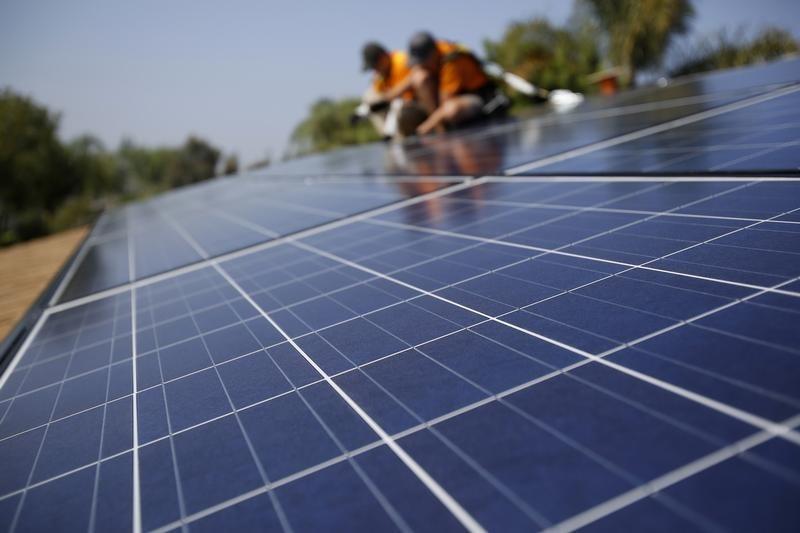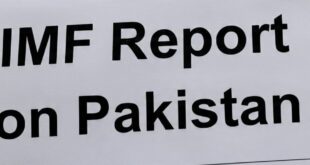
Special Report
Islamabad:
Discover how residents in Pakistan are combating high electricity bills by transitioning to solar energy. Learn about the significant increase in solar panel installations and the potential for renewable energy in Pakistan
Taiq Iqbal, a resident of Islamabad, has been troubled by extraordinarily high electricity bills from IESCO. Over the past year, his average electricity bill has been Rs. 10,000 per month, which has disrupted his budget and made it difficult for him to manage his expenses. Despite trying to reduce his electricity usage by turning off appliances like the AC, fridge, iron, and other electronic items, his bills did not decrease.
Frustrated with this approach, Mr. Iqbal consulted with a friend living in his vicinity who had installed a solar system the previous year. Acting on his friend’s advice, Mr. Iqbal decided to install a solar system on the roof of his house. With an investment of Rs. 1.2 million, he successfully reduced his electricity bill from thousands to hundreds of rupees and now enjoys a continuous supply of electricity.
From 2018 to 2023, the average electricity tariffs for households in Pakistan surged from Rs. 12 per unit to Rs. 42 per unit, marking a more than 300% increase. This drastic rise in tariffs has driven consumers to either resort to electricity theft or shift from the national grid to solar systems.
During the first eight months of the current fiscal year (July 2023 to Feb 2024), there was a 76% increase in net metering. However, accurate data on the number of off-grid consumers is unavailable. The recent surge in solar imports indicates a growing number of off-grid consumers, though reliable data is lacking.
Rural consumers, both household and commercial, have increasingly shifted from the national grid to solar panels to avoid exorbitant electricity bills. The rural economy is more vulnerable to inflation than urban areas due to fewer livelihood opportunities. This has compelled rural residents to switch to solar energy for daily household activities such as water pumping machines and fans, while commercial consumers like wheat grinding and tube well owners have also transitioned to solar power.
According to the World Bank, Pakistan has an estimated solar energy potential of 2.9 million Megawatts or 40 Gigawatts. Achieving this potential would require only a tiny fraction of the country’s land area, providing a sustainable solution to the increasing demand for electricity. The Pakistani government aims to generate 20% of its electricity from renewable sources by 2025.
A wheat grinding owner in Muzaffar Garh switched to solar energy after receiving a bill of Rs. 400,000 in January, covering the cost of solar panels with this amount and permanently disconnecting from the national grid. Similarly, a resident of a posh society in Lahore reported that he would recover the cost of his solar panel within five years through net metering, making his solar power effectively free thereafter.
Given the growing demand for solar installations, the Pakistani government should introduce incentives similar to those implemented by Maryam Nawaz Sharif in Punjab. This would not only reduce the national average tariff but also help alleviate circular debt, reducing the need for foreign loans.
Muhammad Mustafa Amjad, a research expert at Renewable First, stated that renewable energy plants can be operational with upfront payments and cost 4 cents per unit, compared to other energy sources which cost more than 12 cents per unit. As solar technology costs have decreased globally, it has become a viable and cost-effective option for energy production in Pakistan. The poor can also afford this cheaper energy for heating/cooling, cooking, and transport. He further highlighted the flourishing off-grid solar system market in Pakistan and the untapped potential for on-grid solar energy in Balochistan, Sindh, and Southern Punjab.
Regarding regulations and policies governing solar panel installations in Pakistan, various Acts provide guidelines. The National Energy Efficiency and Conservation Act 2016 promotes energy efficiency and sets targets for reduced consumption, indirectly supporting solar adoption. Similarly, the Alternative Renewable Energy Policy (ARE Policy 2019) covers photovoltaic and thermal solar technologies, setting ambitious renewable energy generation targets and outlining procurement procedures. Some provinces, like Khyber Pakhtunkhwa (KP), have established technical specifications for solar panel installations to ensure safety and quality.
At the end, the path to solarization in the country, particularly for grinding operations, is challenging but achievable. The establishment of solar parks in three districts of Punjab – Muzaffar Garh, Jhang, and Layyah – will undoubtedly help improve the national energy mix. In addition to these solar parks, the federal government should expedite its efforts to implement solarization projects for official buildings in the upcoming financial year. This will enable the transition from power production using environmentally harmful furnace oil (FO) to cleaner and more sustainable power generation methods.
Furthermore, by diversifying the energy sources and reducing reliance on fossil fuels, Pakistan can mitigate the environmental impact of energy production and contribute to global efforts to combat climate change.
 BeNewz
BeNewz




